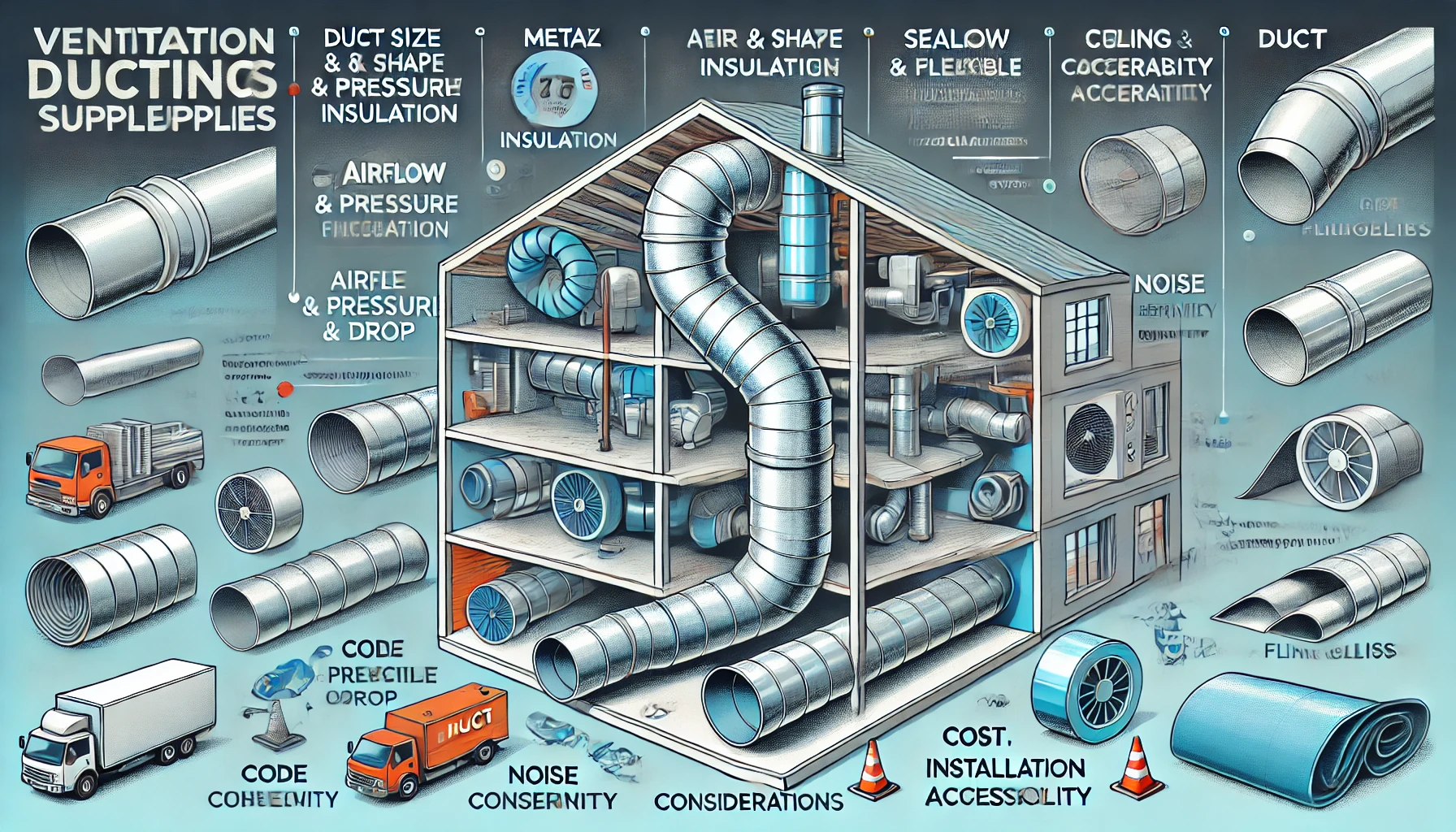What are the essential types of ducting supplies needed for a comprehensive HVAC system
A comprehensive HVAC (Heating, Ventilation, and Air Conditioning) system relies on various ducting supplies to ensure efficient airflow, temperature control, and air quality within a building. Understanding the essential types of ducting supplies and their contributions to system performance and efficiency is crucial for both installation and maintenance. Here are the key ducting supplies commonly used in HVAC systems:
1. Ductwork
Ductwork is the backbone of any HVAC system, responsible for distributing conditioned air throughout the building. There are several types of ductwork, including:
- Sheet Metal Ducts: Made from galvanized steel or aluminum, these ducts are durable and suitable for high-temperature applications. Their rigidity ensures minimal air leakage, contributing to system efficiency.
- Flexible Ducts: Constructed from a wire coil covered with flexible plastic, these ducts are ideal for maneuvering through tight spaces and around obstacles. They are easy to install but may require proper support to prevent sagging and airflow restriction.
- Fiberglass Lined Ducts: These ducts have an inner lining of fiberglass insulation, providing thermal and acoustic insulation. They are often used in commercial settings to reduce noise and improve energy efficiency.
2. Vents and Registers
Vents and registers are the endpoints of the ductwork, allowing air to enter or exit a room. They play a critical role in regulating airflow and maintaining consistent temperatures. Types include:
- Supply Vents: These vents deliver conditioned air from the HVAC system into the room. They are often equipped with adjustable dampers to control airflow direction and volume.
- Return Vents: These vents draw air from the room back into the HVAC system for reconditioning. Proper placement of return vents is essential for balanced airflow and efficient system operation.
3. Dampers
Dampers are mechanical devices installed within the ductwork to regulate airflow. They can be manual or motorized and are used to:
- Control Airflow: Dampers help balance the distribution of air to different areas of the building, ensuring even temperature and comfort.
- Zone Control: Motorized dampers are often used in zoning systems to control airflow to specific zones independently, enhancing energy efficiency by conditioning only occupied areas.
4. Insulation
Insulation is crucial for preventing heat loss or gain in the ductwork, maintaining the desired air temperature as it travels through the system. Types of duct insulation include:
- External Insulation: Applied to the outside of the ducts, typically made from fiberglass or foam, external insulation reduces energy loss and prevents condensation on the duct surface.
- Internal Insulation: Installed inside the ductwork, internal insulation provides thermal and acoustic benefits, often used in noise-sensitive environments.
5. Duct Sealing Products
Duct sealing products are essential for preventing air leaks in the ductwork, which can significantly reduce system efficiency. Common sealing methods include:
- Mastic Sealant: A thick, paste-like substance applied to duct joints and seams, mastic sealant provides a durable, airtight seal.
- Foil Tape: A high-strength adhesive tape used to seal duct joints, foil tape is easy to apply and provides a reliable seal when used correctly.
6. Support and Hangers
Proper support and hangers are necessary to secure ductwork in place, preventing sagging and maintaining airflow integrity. Types include:
- Straps and Hangers: Metal or plastic straps and hangers support the weight of the ductwork, ensuring it remains securely in place.
- Brackets: Used to attach ductwork to walls or ceilings, brackets provide additional stability and support.
Contribution to System Performance and Efficiency
Each type of ducting supply plays a specific role in ensuring the overall performance and efficiency of an HVAC system:
- Efficient Air Distribution: Properly designed and installed ductwork ensures that conditioned air reaches all areas of the building efficiently, maintaining consistent temperatures and comfort.
- Reduced Energy Loss: Insulated and sealed ductwork minimizes energy loss, reducing the workload on the HVAC system and lowering energy consumption.
- Balanced Airflow: Vents, registers, and dampers help regulate airflow, preventing hot or cold spots and ensuring balanced heating and cooling throughout the building.
- Enhanced Air Quality: Well-maintained ducting supplies contribute to improved indoor air quality by preventing air leaks and ensuring proper ventilation.
Place your online orders: https://www.ductingsuppliesuk.com/shop-online
Conclusion
A comprehensive HVAC system requires a variety of ducting supplies, each contributing to the system’s performance and efficiency. Understanding the roles of ductwork, vents, dampers, insulation, sealing products, and support structures is essential for designing, installing, and maintaining an efficient HVAC system. By ensuring these components are properly selected and installed, one can achieve optimal comfort, energy efficiency, and air quality within a building.

